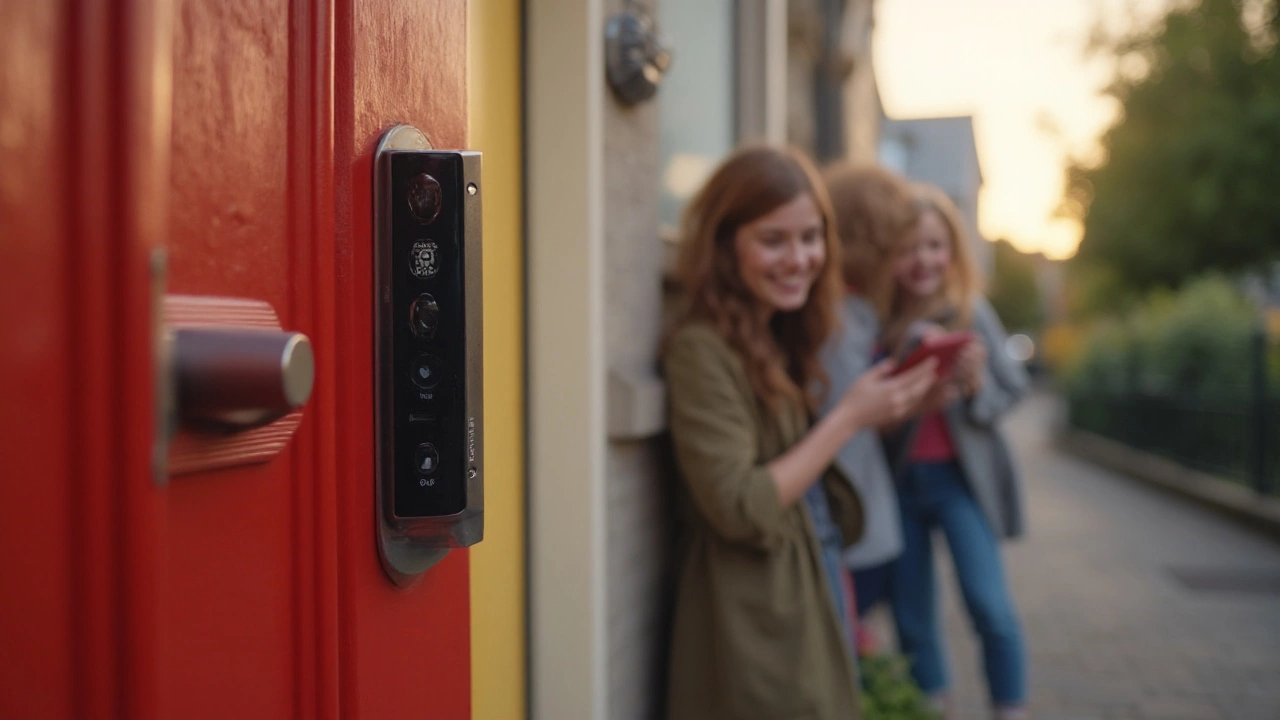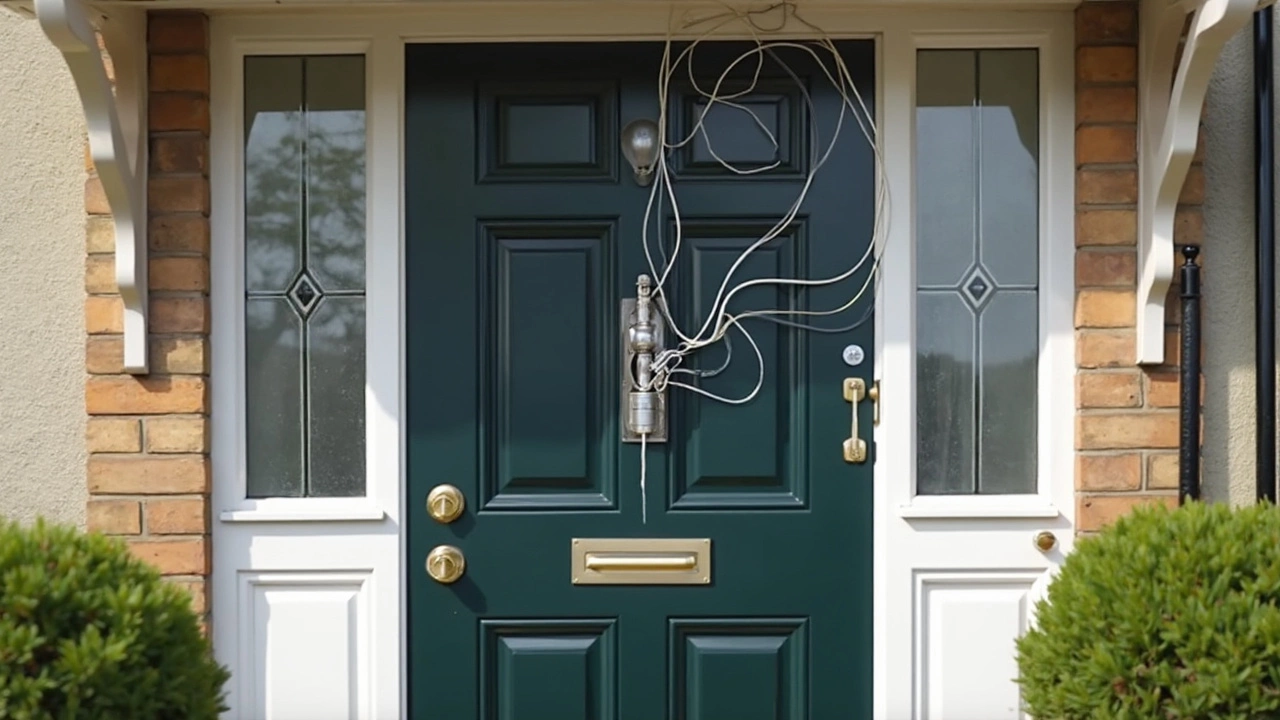Smart doorbells have turned a simple knock into a full‑blown security hub. They let you see who’s at the door from your phone, record video, and even talk to visitors without opening the door. But the market is crowded and installing one can feel like a tech maze.
First, decide what matters most to you. If you want crisp video day and night, look for models with built‑in infrared night vision. If you’re on a budget, a basic Wi‑Fi doorbell without a subscription will still send alerts, but you’ll need to manage local storage yourself.
Brands like Ring dominate the UK market, offering a range of options from battery‑powered to hard‑wired units. Battery models are quick to install but need regular charging. Hard‑wired models tie into your existing doorbell wiring, giving continuous power and usually a longer battery life for the camera.
Check if the doorbell integrates with your existing smart home system – Alexa, Google Assistant, or Apple HomeKit. Integration lets you arm security modes, control lights, and lock doors from a single app.
Most UK users wonder whether an electrician is required. If you’re replacing a wired doorbell, you’ll need to handle mains voltage, so hiring a qualified electrician is the safest route. For battery‑only models, you can mount them yourself with a drill and the supplied mounting kit.
Before drilling, turn off the power at the fuse box. Use a level to ensure the camera sits straight – a tilted view misses faces. Thread the mounting bracket through the wall, secure with screws, and attach the doorbell body. Turn the power back on and follow the app’s pairing steps.
After installation, test the motion detection settings. Too sensitive, and you’ll get alerts for passing cats; too low, and you might miss a burglar. Most apps let you draw custom zones so you only get alerts when someone approaches the front porch.
Don’t forget to set up backup power. A UPS or a battery pack keeps the camera recording during power cuts – essential if you live in an area with frequent outages.
Smart doorbells are tempting targets for thieves. Install the unit at a height that’s hard to reach, and consider a mounting bracket with anti‑tamper screws. Adding a small security camera nearby can capture anyone trying to steal the device.
Watch out for firmware updates. Manufacturers release patches to close security holes, and ignoring them leaves your doorbell vulnerable to hacks. Enable automatic updates in the app if possible.
Ring users often ask about subscription costs. In the UK, Ring Protect plans start at around £3 per month and add video storage, advanced motion alerts, and theft protection. If you’re fine with saving clips locally, you can skip the subscription and still enjoy live view.
Finally, protect your Wi‑Fi network. Use WPA3 encryption, change default passwords, and create a separate guest network for smart devices. This limits a compromised doorbell from accessing other home devices.
With the right model, proper installation, and a few security tweaks, a smart doorbell becomes a reliable front‑line guard. It lets you see, hear, and talk to visitors wherever you are, while adding a layer of deterrence that ordinary doorbells simply can’t match.

Curious about which doorbell security system actually works best in real life? Here's the inside scoop on top video doorbells, real user tips, and how to pick the smartest one for your home.

Looking for the best wireless video doorbell in the UK? We break down the top models, real-life features, and smart home compatibility right here.

Wondering if you have to pay monthly for a Ring doorbell in the UK? This article breaks down what you get for free, what a subscription covers, and whether Ring doorbells are worth it without paying a monthly fee. Find out the key features, potential hidden costs, and practical advice for homeowners or renters. Get real-world insight into how Ring compares with other doorbell solutions in the UK.

Stuffing a smart doorbell into your front door might sound high-tech, but do you really need to get your hands dirty with wires? This article clears up whether hardwiring is essential or just an old-school way to power your smart doorbell. It breaks down the pros and cons, explores wireless options, and throws in real tips so you won't regret your next buy. Whether you're renting or own your home, you'll know exactly what suits your place best. No guesswork, just practical advice that actually helps.

Ever wondered if your smart doorbell needs a subscription? This article dives into the pros and cons of opting in for a subscription service with your doorbell system, exploring the expense, benefits, and whether it's truly necessary for your home security setup in the UK.

Ever wonder if law enforcement can ask for footage from your Ring doorbell? This piece covers the legal landscape in the UK when it comes to police requests for video access. Learn about your rights, potential scenarios, and helpful tips to navigate these requests. Understanding this can help you make informed decisions about privacy and security at home.

Smart doorbells are increasingly popular for home security in the UK, but many wonder if they can function without WiFi. This article delves into how these innovative gadgets operate and what alternatives exist for those without internet connections. It also explores the benefits and limitations of using smart doorbells without WiFi, offering insights for homeowners considering tech upgrades.